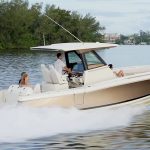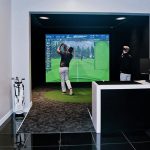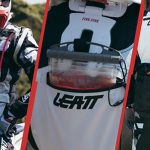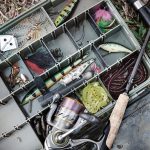While acquisitions still played a role in outdoor industry vendors fourth quarter results, the deal market has clearly slowed down compared to its frenetic pace last year. Even though there were not as many deals closed
during 2005, the size of many of the acquisitions did have an impact on vendors results, particularly in hardgoods. Of the mega-deals occurring over the last year, only the Quiksilver deal had a major impact on the numbers reported by public companies in the fourth quarter and reflected in this report.
The smaller deals executed by Rocky and Phoenix are also reflected in the overall numbers as non-organic growth. The wide-spread acceptance and popularity of outdoor lifestyle apparel is also reflected in the fourth quarter results, with softgoods wholesale sales out-pacing hardgoods by a significant margin. Retailers who are active in the Bicycle, Outdoor, and SnowSports markets experienced a very positive fourth quarter, with increased margins, profits that outpaced sales gains, and lean inventories at quarter-end.
The B.O.S.S. Report presents an overview of fourth quarter industry results in the chart on page two. Results are posted for those companies that have reported for the period ended closest to the end of December. Because the
report is not a clear picture of the entire industry, BOSS feels the total numbers are less significant than the trending information provided in the percentage
increases and decreases. SportsOneSource does a broader analysis of the industry each quarter by comparing vendor wholesale performance against retail sales performance based on data provided through SportScanINFO. The first SportsOneSource Annual Sporting Goods Market Report reflecting both wholesale and retail performance of brands will be available in May.
Sales for the softgoods vendor companies tracked in this report increased 21.9% for the quarter, while net income increased 17.2%. These results show a slightly higher growth rate for both sales and earnings than the entire
sporting goods market, as reported in Sports Executive Weekly, a sister publication to BOSS. Return on Sales, which is the measure of net income as a percentage of sales, declined 40 basis points compared to last year, coming in at 8.3% versus 8.7% in the year-ago period. The ROS number in the BOSS Specialty end of the business was 900 basis points higher than the broader sporting goods industry results.
For the fourth quarter, the gross margin for the reporting softgoods vendor companies averaged 41.9% of sales for the quarter, up 50 basis points from 41.4% of sales in the year-ago period, but was about 130 basis points below the broader sporting goods market.
Deckers has been the leader in organic growth in the softgoods sector for several quarters. However, newcomer Crocs, Inc. took the honors this year with an astronomical 524% growth rate compared to the fourth quarter of last
year. Volcom was a distant second place, but still posted an impressive 36% increase for the quarter. Deckers posted a 22% revenue increase, thanks in large part to the success of the Ugg brand.
Quiksilver revenues would have increased only 1.8% for the quarter without the Rossignol acquisition. VF Corp. saw its Outdoor Coalition post an 18% increase in organic sales growth for the period. The North Face increased revenues
in excess of 20%, while revenues of the Vans brand also increased by double-digits. Total revenues of VFs packs business rose 13%, driven by higher JanSport brand sales in the U.S. Phoenix Footwear and Rocky Shoes & Boots relied on smaller acquisitions to drive double-digit sales growth during the quarter, while Lafuma relied on a combination of acquisitions and currency exchange benefits. However, even if the acquisition-based growth of these companies is excluded, the softgoods sector grew roughly 10% during the
quarter. Rocky Shoes & Boots would have posted just an increase of just 0.6% or the period. Phoenix Footwear would have actually seen a 3.9% decline in revenues on an organic basis, but the companys Royal Robbins brand reported an organic sales increase of 24.5% to $3.7 million compared to $3.0 million a year ago. Across-the-board margin improvements helped push overall net income up in the softgoods sector.
The industry-wide slow-down in hardgoods sales was particularly evident during the fourth quarter, when the sector only grew 1% compared to last year.
The largest acquisition in the hardgoods sector was the Amer Sports-Salomon deal. Because the deal closed in the middle of the fourth quarter, neither adidas nor Amer Sports reported Salomons quarterly numbers, so the deal had
no positive or negative effect. However, Riddells acquisition of Bell Sports did affect fourth quarter results. Without the reported 31% increase in sales at
Riddell Bell Holdings, sales in the hardgoods sector would have declined 1.3% during the quarter. Riddell Bell, K2, Oakley, and Thule were the only hardgoods vendors to report organic growth during the quarter. A variety of circumstances plagued the other manufacturers. A massive decline in Military tent orders caused the double-digit declines at Johnson Outdoors. Excess SnowSports inventories impacted Head N.V and Atomic Ski, while a lack of North American interest in Nordic Walking impacted Exels top-line.
K2s $250 million non-cash goodwill write-down impacted the entire sectors profitability metrics. Without the write-down, on a pro-forma basis, net income for the hardgoods companies would have increased 13.6% for the quarter.
That would have put ROS at 5.9% of sales, a 70 basis point increase over last year, when the sectors ROS was 5.2%.
The retail sector is healthier than it has ever been. The flurry of acquisitions over the past few years has subsided and there is no longer any significant impact from integration expenses. With these projects completed, retailers were able to get back to the basics and net income and ROS improved as a result. Income out-paced sales by seven full percentage points. ROS increased 30 basis points to 5.6% of sales.
Sales in the Hunt/fish/camp segment outpaced the rest of the bicycle, outdoor and snowsports market with a 15.7% increase, but earnings growth lagged behind with a 16% gain. Zumiez clearly led the way in every metric with sales
growth of 43%, comp-sales increasing 20%, and net income jumping 59%.















